Some Passover Activities / Peulot For School Or Home
- Background, "basics", seder ideas, discussion topics & suggestions (including role-plays) also appear in our other sections – many of which can be utilized equally easily in a classroom &/or augment what you will find here.
- Suitability: Most of the following can be used in classroom / study group and home/family gathering, and for different age groups in one variation or another (which we then specify).
- Our transliteration method is slightly different than some. if you need a little help, see our Hebrew Transliteration guide.
- The Expressive Hagada – Be An Art Critic
- Eser Makot / Ten Plagues – New "plagues" & "Ad Awareness Campaign"
- Use The Net & Social Media for Passover learning
- What Belongs?
- This Chag Is Brought to You By the Number / Mispar...
- Hebrew familiarization and reading practice with the Passover hagada
- The Meanings of a Message
- The Four Children / Sons, craft
- This Round Is Brought To You By The Letter Mem (as in matza)
- Hmmm, I'm Puzzled (simple word recognition)
- Spring Has Sprung – Treat Nature Nice (It's God's Creation)
- And speaking of frogs... how about some Hopping Frogs!?
- Koby's Favorite Dessert
- The Dis-ordered Seder
- And Then.....!
- Day Kvar!
- Teach your students a cool little magic trick to perform at the seder
- Ken Supyese Y Entendyese
The Expressive Hagada – Be An Art Critic
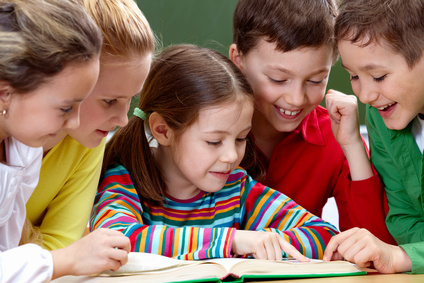
At some seders, sometimes there aren't enough copies of the same hagada edition by one publisher. It makes life interesting when page numbers don't match up during the readings, or one's text differs in editing, translation, additions… Sometimes related activity books for children are also collecting on the shelves over the years. Occasionally one acquires an alternative hagada (e.g. from the Soviet Jewry era), or one put out by a particular stream of Judaism, or a fine art edition of some kind.
If you have a mix, GOOD! Bring them to your class or study group. Also ask students to bring some from home if they have, especially if they're unusual or more illustrated. Perhaps there are also interesting samples in your synagogue's library to borrow.
This is best done sitting in a circle on the floor or at one large table together. If there are many people involved, then after everyone has found the same part in all hagadot, they keep passing them to the left every 20 seconds or so to look at the next one until all copies have been seen by everyone. If you have more than ten people, divide them into smaller groups of no more than 5-10 per group/circle to do this.
For younger children: If familiar with some seder parts already, ask which part they'd like to look at and compare first. Or simply choose a portion that tends to have more illustration. Have them compare and discuss how the illustrators depicted things, did they portray a particular opinion, did they do a good job or not, what kind of feelings and thoughts their picture or design evokes – and if and how they could have done better.
For older children & adults: you can do the above but also look at text differences – like for ארבעה בנים / Arba-a Banim (Four Sons/Children). Or are there the regular three matzot or an added one to represent some currently oppressed group. Etc.
"Worst case scenario", if you haven't so many illustrations or hagada variations, try this – find illustrations and photos - like from magazines or newspapers (remember to look for Passover ads too!) – that resonate with Pesach topics. Discuss how a topic could best be visually depicted – like if they were a publisher's design team planning a new edition of a hagada. To get a sense of how a photo for one purpose gets re-used for a completely different learning one, just look at our facebook page – see how we often use post shares to teach Hebrew words, etc. (see also peula / activity #3 – Use The Net & Social Media).
Back to top ⤴Eser Makot / Ten Plagues – New "plagues" & "Ad Awareness Campaign"
Start by reviewing the original עשר מכות / Eser Makot and the typical symbolic representations in a few different hagadot (see previous activity above). Discuss and have students submit suggestions for modern worst makot / "plagues" – pressing concerns in the world (or locally, etc.) or alternatively, worst events of the past year – especially among older youth who would be more cognizant of current events. In a family, this could also be a discussion of the ten toughest challenges you've come through in the past year if that suits you.
Vote on ten as a group. These may be copied down and taken home for the child's seder too, of course. Brainstorm what would be a good "logo" or very simple visual representation of each "plague". You could treat this as if you were creating an ad "awareness" campaign.
As a hands-on activity, some options:
- each person might work on one symbol/logo (or in duos/trios, depending on the number of kids) to be put up altogether on display.
- drawing or finding [cut & paste] pictures representing these contemporary plagues for use in their seder at home &/or as a class display.
- have each child hunt up two things to bring from home next time – one a symbol of an "original plague", and the other a symbol of one of their "new" plagues.
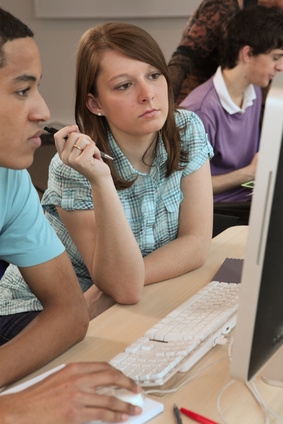
These need not be done only with small children, by the way. Just think of what clever and creative finds an older child or youth might discover and bring in as symbolic, or put a hand to designing for later use in their seder. After all, ad campaigns are done by savvy adults, right? (And this generation sees plenty of advertising.) ***One could also have your group or class actually prepare the rest of an ad campaign – with zingy lines, slogans, what could go on a bumper sticker…
Again, encourage "bringing the lesson back home", i.e. to be used in the seder. It can provoke discussions there, while the child also becomes more connected that night.
Back to top ⤴Use The Net & Social Media for Passover learning
- Does your class, youth group or synagogue have a Facebook page? Have your children scour their feeds for posts to share on your page – re-caption for use in Pesach themes or hagada parts (see our other sections to help you with topics, themes, unusual spins). Also photograph your class creations – e.g. symbol creations or sharings from home to post up on your synagogue site or a class page, etc.
- Do your students Twitter? That "ad awareness campaign" described in #2 above can be useful for real – post those slogans you came up with, with photos of symbols created even better!.
What Belongs?

For younger children: Blanket or carton with large towel to cover + objects pertaining to Pesach as well as some from other chagim. Each feels one of these hidden objects, tries to identify it, tells if it belongs to Pesach or not and why.
Variation for more ages and situations: You can use actual items or, if you study Hebrew, write vocabulary on cards in Hebrew. (Or if not, then in transliteration so they get familiar with terms). We provide a basic vocabulary list in Good to Know in Hebrew, and auxiliary lists relating to the seder, etc. scattered in our other sections. The type of info, format and number of cards depends on age, level of study, time you have and number of participants. For example – mix in vocabulary from a few other holidays, seasonal words, etc. Or mix vocabulary words that are chametz foods with food that is acceptable to Pesach, including seder food items too.
Set the cards (or items or symbols) all around the room, visible to sight (you can do this with them watching, or alternately before they arrive). Have two tachanot / stations (e.g. two separate tables). Give the students an exact amount of time to accomplish the goal, and start off with "! אחד, שתיים, שלוש – רוצו " / "echad, shtayim, shaloshhhhh – RUtzU!" [1,2,3 – run]. All find and bring the cards/items to the proper tables. You can do this as one group or as 2-3 teams. In that case, they each get two points for every correctly placed non-Passover holiday word/item, and three points for every correctly placed Passover one they snagged. Play a couple rounds.
*If you do teach Hebrew food vocabulary, we also have these sample multimedia reviews from our online Hebrew course that you may find useful:
Back to top ⤴This Chag Is Brought to You By the Number / Mispar...
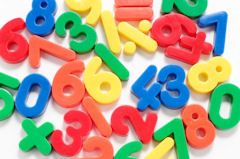
- Review counting numbers in Hebrew. You can use our handy multimedia aid. Ask the students what number seems to most blatantly recur in this chag? – four ! How many 4's can they come up with? 4 cups of wine, 4 names for Passover, 4 kinds of children/learners ("sons"), 4 Questions, 4 matriarchs in Echad Mi Yodea (and moms really rate!).
- Sing/teach and then play אחד מי יודע / Who Knows One. You can do this by using a regular deck of cards, and by individual turns or in teams. The number pulled has to either be answered with the correct parallel from the song (your choice if more appropriate using English or Hebrew terms), or with something else from the seder with that number association (like the 10th plague, for example). Note that this goes up to 13 in the song. With older &/or more experienced groups, you can luckily use the cards to get that far. But if the kids are real young &/or new to this, teach the first 7 or 10. If they pull a people card, the other team can ask them to tell something significant about a chosen specific character: Pharoah, Aaron, Miriam, Moses. Or something harder like one minute to come up with a 1-2 sentence slogan or rhyme having to do with that person (including their name). The Ace and any unused numbers you aren't covering would become wild cards, where the opposing team can ask them any Pesach seder, song or history question they like, etc. Do clue them in that they get kind of lucky on possible answers for "four" :) .
*Teacher's note: The best way to learn a shir / song (& some texts too) is to make these part of your environment – with posters or banners of the words (large). Put shirim up around your room, sing often, and use a pointer (better if feasible – assign a child each time). Heads-up joint-experience is better than heads down, plus frequent short runs (like a commercial break in your studies!), no pressure, help one get familiarized bit by bit and pick things up better i.e. more like Jewish camps do. You don't even need expensive poster boards – newsprint sheet pad, butcher-block paper, marker on old sheets or pillow cases pinned up…
*See also peula / activity #19 "Ken Supyese Y Entendyese" – look at roots, sing in Ladino!
Back to top ⤴Hebrew familiarization and reading practice with the Passover hagada
For this you need to xerox a page of material you are learning from the hagada. Number the lines. You, or students taking turns, will read one word in that page. How fast can others locate it and give you the line number(s) it appears on? Harder – they then must read it together with the word that appears before and after it? Harder still – read the entire line. The other children get first shot at correcting errors, but if not, help them out. (Please remember that there are always ways to tell a kid how great they are doing and reinforce their effort even as you correct error/s).
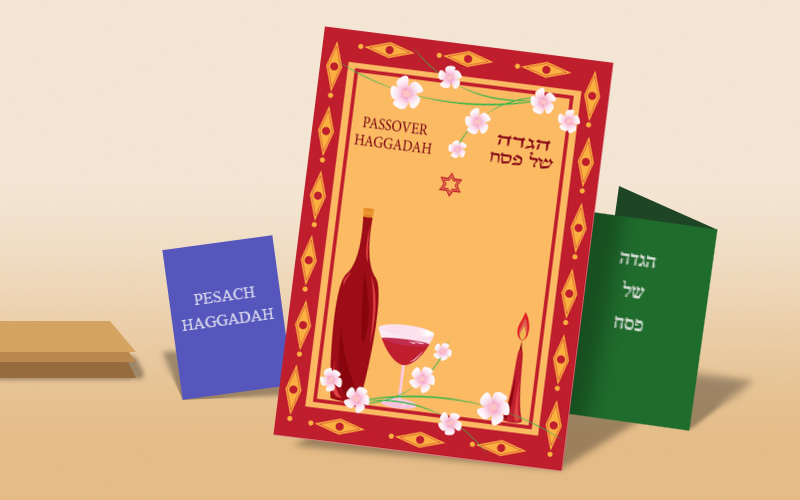 is the one time that the more different hagadot you have, the better!
is the one time that the more different hagadot you have, the better!The Meanings of a Message

This is more suitable for older youth (and adults too): In this instance, most likely you concentrate on English text. You provide hagadot. The students work in pairs or small groups. One closes his eyes, opens the book and points. They write down the one line. They then interpret whatever message/s that they get from it, both in more traditional/familiar terms and also in more possible contemporary terms.
There are two sides to this exercise. Because they likely do have some familiarity with Pesach already, they could give a thoughtful interpretation on the spot. (Pretend to be like the sages of yore debating a meaning.) But it is also possible – out of context – to interpret things in unexpectedly good ways or in some very unintended (and not always so fine) ways. Ask them to do both – the likelier message based on what they know, and one that is more instant – a novel spin, like that an alien might do if he came across this one line alone, or an archeologist.
This is a good exercise for learning how communication (and scholarship) need to be handled carefully and responsibly (it requires background) or the opposite – misconstrued or turned into all sorts of things accidentally or purposefully when taken out of their original context. It helps remind us to be alert and makes us more sensitive to this particular problem in the world around us. This can lead to an interesting discussion on what can occur in a sound-bite culture, affecting our communication, learning and understanding – like in media, culture, politics, and religion today. We remind our children that there's a reason we have and appreciatively use a text/hagada. We should be careful about what we water down or shorten too much as we could lose valuable messages and original intents. Yet we also need to be able to compare with our own contemporary experience, and sometimes 'accept the challenge to challenge' too.
Back to top ⤴The Four Children / Sons, craft
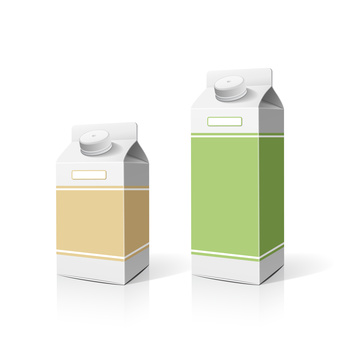 Put a different son's face on each side
Put a different son's face on each side For younger children (although don't discount this idea for teens, etc. – they could get into it with some really cool design work as well):
Each child brings a milk carton, four-sided bottle,or small box that can be held up or go on their hand for use in the seder. Be prepared to cover over and tape tight with paper – e.g if drawing on the item with whatever supplies you use is problematic, or in case a kid gets frustrated with what they did and feels a need to redo a bit. They will be making a face on each side to represent each of our ארבעה בנים / Arba-a Banim. This can be used during this reading at their seder at home or as a cool centerpiece for their table, etc.
Before starting, demonstrate some simple facial representations on the board. The kids can all practice on the board first too, thus sharing ideas and skills to help each other. In an age of the smiley + other creations using just a keyboard - if you start by thinking in those terms this needn't feel like such any insurmountable challenge.
Example:
| ([:-) | wise (knows some info already & wants to learn more) |
| >:>( | scornful, or in a bad mood (we're not fond of "wicked") |
| ?:-o | simple (what's it all about, this Passover biz?, starting from beginning) |
| <8^+ | ignorant (does not know to ask [yet]) |
An alternative: provide old magazines for finding suitable faces to cut out and paste in, collage-style. (Sticker dots, markers, bits of leftover contact-paper, etc. are really handy to keep around for these things, aren't they?)
*We'd like to emphasize some sensitivity here – we don't want to turn off people that are maybe learning for the very first time, or missed out before – someone that wants to take part and learn should be encouraged in seeking the "wise" track.
Back to top ⤴This Round Is Brought To You By The Letter Mem (as in matza)
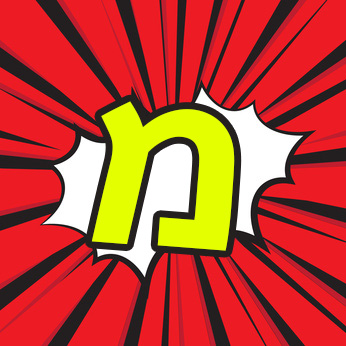
Use a shuffled deck of Hebrew alef-bet cards.
Each round, announce the next letter from your deck. Either individually or in teams – they must come up with a vocabulary word starting with the letter which has to do with the chag. If they can't do so within a fair amount of time, the other team gets a shot at it (in addition to their own turn).
Another option – they score three points if they come up with a word starting with the letter with no help; award two points when they succeed with some helpful clues. Say the child pulls the letter kof and she's stuck. Write the letter on the board. Add the 2nd letter of a possible easier/more familiar answer to help, like dalet (to aim for kidush). They can also score two points if they come up with a word that simply includes the given letter within the word.
*** You can throw in English letters in some rounds too, if you like. They then have to come up with words related to the chag, like liberation, lice (feh!) and lettuce (used sometimes on seder plate) for the letter L.
Hmmm, I'm Puzzled (simple word recognition)

Tap our basic handy list in Good To Know In Hebrew, and/or additional pertinent vocabulary from the lists in our Worthwhile Information section and from our Free Collection presentations. On your computer, cut and paste the vocabulary you want to use. Blow up the font size so you can create one enormous word or name, etc. per page. Print them out. If they like, have the children color up the background of this future puzzle a bit using light colored crayons (so that the word still stands out). Or convert the font of your words to one that has heavy outline with empty space within the letters for the kids to color in. Cut each creation into 3-10 pieces (or more, all depending on age and ability), put it in a ziplock or baggy, and redistribute them to the students. Each student puts a puzzle together to see the word. Then they can trade off and do another...
Back to top ⤴Spring Has Sprung – Treat Nature Nice (It's God's Creation)
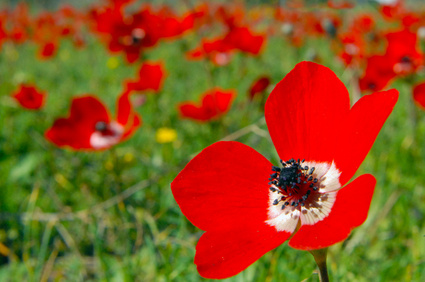
גדיא / Chad Gadya – First, learn at least some of the song to get them more familiar and comfortable with the Hebrew and the melody. Afterwards, go over the text more completely in English – it's pretty cool – so that they get a sense of connected logical progression. Now introduce the concept of Pesach as חג האביב / chag ha-aviv, the holiday of spring, and what that means (see some of our background information, like here). "Could we create a song or prose in the fashion of Chad Gadya on an environmental topic, like conservation and recycling, to help in respecting and saving God's creations?" Here's a fast example: ... the milk comes from the cow, goes into the carton that we bought for [whatever local price], we drink for our health (or feed the cat…), it goes into the recycling bin, which goes to the plant and gets cleaned and turned into paper which gets used for a birthday card, which we cut out the picture-front from to make a new message of good wishes and hopes on Pesach to hand out to our seder guests… etc. (Do you have ADHD students? Such "tangent strings" sometimes appeal to them especially ;-) .
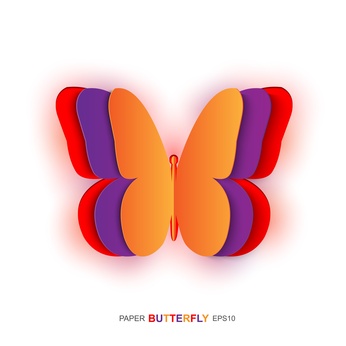
Discuss Dayenu and how we should appreciate and encourage every effort and next good act, as these build up - kind of like drops of rain that then eventually fill and overflow a cup, right? Then make cards to put around the seder table at home. They could be writing "blessings", good wishes, goals & hopes or many small changes… to help the world become a renewed and better place.
For the younger set especially:You can have the children make their blessings & hopes on large butterflies. Take a sheet of paper, fold in half, cut in shape of wings. Open, and paste on a popsicle stick or staple on a straw (or another strip of paper in a different color) for the body in the middle. Add eyes and a smile. Decorate and write or draw "messages" on the wings. Depending on age and ability, this could be a message, single words, or simple pictures, or smiles, hearts, etc.
*** We encourage using "recycled supplies" :) - as well as having the kids contribute some from home, e.g. wrapping paper leftovers, packaging etc. that would just get trashed (the inside of food and cereal boxes,for one of tons of examples).
*If you are studying some Hebrew, this is also a good time to learn some animal vocabulary when discussing aviv / spring, conservation, respect for G-d's creations...
Here are some more handy reviews from our multimedia samples:
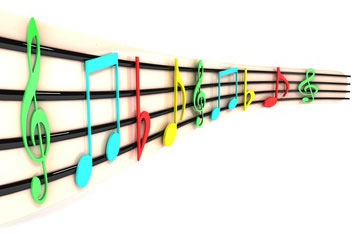
For older students to adult: Have your students think/hunt up familiar songs that would fit either some vocabulary &/or themes of Pesach, to add into your shira / singing at the seder :) . Words like freedom, Moses, slavery, frogs, Egyptian… Have a contest of how fast they can think these up (&/or perform a little sample), back and forth in teams. (We apologize for not being current here, but here's one dated example [showing the author's age]: "Walk Like an Egyptian").
Back to top ⤴And speaking of frogs... how about some Hopping Frogs!?
Likely for older kids in terms of difficulty: Teach your students to make origami frogs – they'd be a real hit at any seder (for the kids of all ages) especially since you can make them hop! Find an excellent demonstration here (The author, who is all thumbs, was able to do this and then remember it too ;-) . So it's not too hard.)
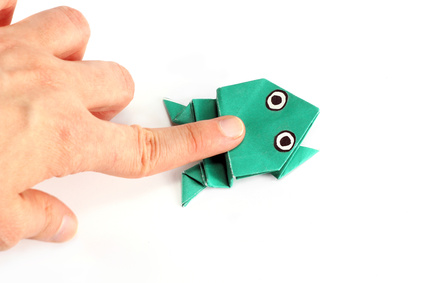 Your seder will be the talk of the town ;)
Your seder will be the talk of the town ;) Koby's Favorite Dessert

This delicious dessert idea was created by Koby, a very nice, smart boy living on kibbutz. It's easy and a fun preparation "job" for the kids ahead of the seder. Even the the youngest child can help with some part (e.g. put the almond in the date).
Ingredients – tmarim / dates, shelled shekedim / almonds (some like using the salted kind in this for that sweet plus salt effect), shokolad / chocolate (dark works better), optional- fistukim / pistachio nuts (crushed).. Though not necessary, if you want your almonds blanched – just boil some water, remove from gas. Throw almonds in for a minute. Then it's easy to rub off the 'skin'. Remove pit from date and replace with an almond. Place a bar of dark chocolate in a glass bowl and zap in microwave for about 30 sec. to melt. Take each date, dip it into the chocolate, then dip the chocolate coating lightly into the crushed pistachios and place finished creation on waxed paper. Test-taste of course to be certain it's fabulous… Whoa, stop already – leave some for the guests! Go serve.
The Dis-ordered Seder
 When you lose the seder [order] of the seder,
When you lose the seder [order] of the seder,then it's lo beseder ["not ok"/not in order] :(
Review the order of the seder (haseder shel haseder ;-) ). Divide the students into teams. Hand each team a set of cards. On each card is one part of the seder. The team that gets the parts organized closest to the real seder order wins. Alternative: write the parts in bubbles disordered all over the board. Have each team try to write up a list in the correct order.
The bubble idea will also word for Echad Mi Yodea / Who Knows One. List all the song parts in scattered bubbles on the board, minus the numbers. The teams try to write them up in an ordered list with the correct numbers for each, or add numbers in turn to each bubble on the board.
And Then.....!
 Sometimes retelling can take some interesting turns...
Sometimes retelling can take some interesting turns...Start telling the story about how we ended up in Mitz-rayim / Egypt in the first place with Yosef / Joseph, how we settled in for a stretch, prospered, worried the locals, and then… a student has to pick up the story by adding a sentence or two/event, then stop, on to the next student to pick up with the next thing that occurred, stop, on to the next student, etc.
Another alternative (more for older participants): Do this as a first-person narrative of the story (or of specific events in there), as told by one or so characters - either our famous ones or as a man-on-the-street account, etc. The narrative continues while the role keeps getting passed on to each next person down the line in succession.
Example of how this works:
[Moses] :
"So I let Pharoah know that, like man, you gotta let us go now or else. And that stubborn guy said to me…"
Switch to next person in line, who picks up the narrative:
[continuing as Moses recounting or improvising maybe as Pharoah…]:
"I told him 'Yo Mo, this is a no go'. I mean the crazy nerve of this guy!. And then…"
Switch to next person in line, who picks up the narrative, etc.
Day Kvar!
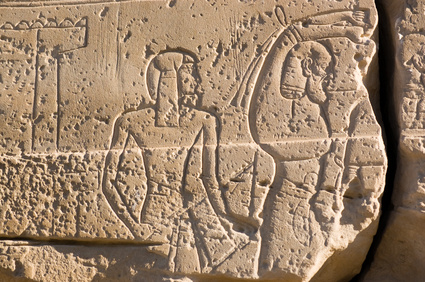 Suddenly, boom, you are slaves
Suddenly, boom, you are slaves Day means "enough" in Hebrew. Day kvar means "enough already" (e.g. what you say to your little brother when he keeps bugging you in the middle of something).
Have the students write down 10-20 things they really love to do. Then tell them, "boom, you are slaves". What things on each person's list could they not do anymore given their new status? What fears would they weigh that might keep them from rebelling (it's pretty scary and not so easy)? How much would it take for them to get to a "rebel point"?
What kind of strengths and skills make a good leader? You can ask the students to use examples of people they know: from family, among friends, local leaders, national leaders… Who might have made a good candidate for Moshe / Moses – for a leader that could fit the job specifications especially in his situation?
Teach your students a cool little magic trick to perform at the seder
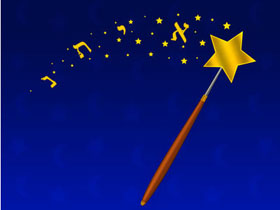
(the author saw it done, she yelped magniv! / cool! and had it explained to her:)
Take a plate and put just enough water in it to cover the bottom. Sprinkle black pepper on the water. Then explain that the pepper represents the sea, which you will part like Moses. Before you do all this in front of your crowd, secretly spread some liquid soap on your finger. Place your finger in the water and watch the pepper get out of the way. The kids try it and it won't part. Unless you have a second soaped finger ready you won't be able to repeat the feat either. Now explain to the kids what you did so that they can repeat it at home - like maybe even to perform during their seder :) .
Back to top ⤴Ken Supyese Y Entendyese
Listen to &/or teach "Who Knows One" / Echad Mi Yodea in Ladino (use that poster method mentioned in Peula / Activity #5 above): The Jewish people have spread out everywhere (and others, much like Ruth, who will be coming up seven weeks later with Shavuot! – who have enriched us so much as well by choosing to join us along our historical way). This can also lead to a discussion of each child's ethnic roots, some geneology and historical interest. In Israel, making a family tree and delving into one's roots at some point is usually an emphasized project included in school curriculums.
Here are two nice renditions on YouTube:
Lyrics (they go up to 12):
Ken supyese y entendyese alavar al Dio kreyense?
Kuale es el uno?
Uno es el Kriador, Baruch Hu Baruch shemo
Kuales son loz dos?
Dos Moshe y Aron
Kuales son los tres?
Trez padrez muestros son, [Avram, Itzhak y Yaakov]
Kuales son los kuatro?
Kuatro madrez muestras son, [Sara, Rivka, Leah, Rahel]
Kuales son los sinko?
Sinko livroz de la Ley
Kuales son los seish?
Seish diaz de la semana
Kuales son los syete?
Syete dias con Shabbat
Kuales son loz ocho?
Ocho diaz de la mila
Kuales son loz mueve?
Mueve mezes de la prenyada
Kuales son los diesh?
Diez mandamientoz de la Ley
Kuales son loz onze?
Onze trivoz in Yisrael
Kuales son loz doze?
Dosay trivos kon Yosef
See also
Recipes to add to your Passover seder meal, Let's Talk About It (more discussion topics) and So Many Ways To Go (ideas for an original seder night).






